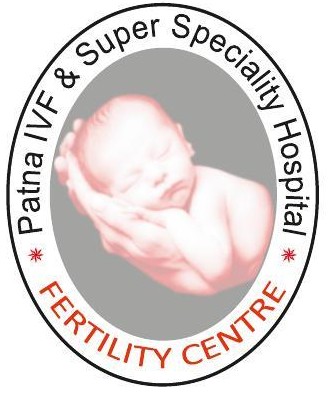While uterine fibroids might be common, many women are unaware of their intricacies. Learning about these growths is crucial. These often symptom-free fibroids can impact life in surprising ways. Our guide touches on the prevalence, symptoms, and management of uterine fibroids. Understanding them could lead to better health decisions and dispel common myths. Dive into these facts to gain insightful and usable knowledge about uterine fibroids and their role in women’s health.
Introduction
Uterine fibroids can be puzzling due to persistent myths and misinformation, yet they affect a significant number of women. Knowing the facts is important as it empowers those affected to make informed health choices. This blog aims to educate, clear up misunderstandings, and provide essential health insights, making these fibroids less mysterious. As uterine fibroids are so widespread, understanding them helps in addressing symptoms early and managing the condition effectively.
Fact 1: Uterine Fibroids Are Extremely Common
Did you know about 80% of women develop uterine fibroids by age 50? Though they’re widespread, many women might not even know they have them. However, some experience symptoms that can affect daily life. That’s why knowledge and early diagnosis are vital. Regular check-ups can ensure these fibroids are detected and monitored. Diagnosis may help in avoiding complications down the line. Keeping informed can lead to timely treatment and better outcomes.
Fact 2: Fibroids Come in Many Shapes and Sizes
Uterine fibroids vary a lot. They differ in size, location, and number. Some are so small they stay unnoticed, while others might grow significantly. Location matters too, and can affect symptoms like pain or heavy periods. Checking regularly ensures your doctor can identify any changes. These differences can influence whether treatment is needed. Thus, understanding the variability of uterine fibroids leads to a clearer conversation with your healthcare provider.
Fact 3: Race and Genetics Play a Significant Role
Uterine fibroids are more common in Black women, and genetics too can increase risks. This makes it important for women in high-risk groups to be aware and seek regular health evaluations. Recognizing that you may have a higher chance gives room for better preventive care. Personalized care is key for addressing risks effectively. Awareness means potentially catching these fibroids early, resulting in better management and outcomes.
Fact 4: The Impact on Quality of Life is Substantial
Uterine fibroids can significantly affect daily life. Symptoms such as heavy menstrual bleeding and pressure in the lower abdomen aren’t just physical—they also impact mental well-being. The discomfort may lead to fatigue, embarrassment, or even anxiety. Such impacts can be disruptive, affecting work and social activities. Supporting women with resources and understanding can alleviate some of these challenges. Awareness helps in seeking help and adapting to live comfortably with fibroids. Healthcare providers can offer resources and support for those experiencing these difficulties.
Fact 5: Most Fibroids Are Not Cancerous
One common fear is that uterine fibroids are cancerous, but they are usually benign. They rarely turn into cancer. Knowing this can ease worries and counteract fear-mongering myths. It’s important to remember that while they might cause discomfort, these fibroids are not a cancer threat. Regular monitoring stays important, but fear shouldn’t lead decisions. Understanding the non-cancerous nature of fibroids helps in maintaining peace of mind.
Fact 6: Delays in Diagnosis and Treatment Are Common
Women often face delays in diagnosing uterine fibroids. Such delays can occur due to vague symptoms or a lack of routine check-ups. Some may wait years for a diagnosis. Self-advocacy becomes crucial for those suspecting fibroids. It may also mean seeking second opinions. Don’t hesitate to ask for further testing. Understanding this delay can lead those affected to become more proactive about their healthcare, ensuring timely treatment.
Fact 7: Prevention Remains Elusive But Manageable
Unfortunately, there’s no sure way to prevent uterine fibroids. Yet lifestyle changes may help reduce the risk. Maintaining a healthy weight, a balanced diet, and ensuring adequate vitamin D intake could possibly help. These adjustments, while not guaranteed prevention methods, contribute to overall well-being. While fibroids can’t be completely avoided, taking these steps might help manage or reduce their development.
Fact 8: Fibroids and Fertility Concerns
Uterine fibroids can cause fertility problems. Yet, many women with fibroids successfully conceive and deliver healthy babies. They may interfere with conception depending on size and location. Stories of hope abound, as advances in treatment improve outcomes. For those concerned, it’s vital to consult healthcare providers. Personalized guidance leads to choosing the best path forward. Women dreaming of starting a family still have reasons to be hopeful.
Fact 9: Not All Fibroids Require Immediate Treatment
Not every case of uterine fibroids needs urgent treatment. Sometimes, doctors recommend ‘watchful waiting’ if symptoms are mild or absent. Treatment, when necessary, includes medication or procedures that are less invasive than before. This evolution means more options are available to suit individual needs. Monitoring fibroids may be sufficient in many cases, with treatment reserved for when it becomes necessary.
Fact 10: The Hidden Economic Burden of Fibroids
The impact of uterine fibroids isn’t just personal but economic too. They cost healthcare systems significantly due to doctor visits, treatments, and surgeries. For women, fibroids can mean lost workdays and reduced productivity. This influences the economy more than often recognized. Bringing this hidden burden to light means pressing for better public awareness. Understanding these implications helps in acknowledging the full scope of fibroids’ impacts.
Conclusion
Grasping the facts about uterine fibroids demystifies this common health issue. Awareness encourages breaking the silence around fibroids, leading to better diagnosis and care. Key takeaways focus on understanding their prevalence, symptoms, and treatment options. By talking openly and advocating for improved healthcare, women facing fibroids can find support and solutions.
Consult us today at Patna IVF & Endosurgery Centre for expert guidance!

